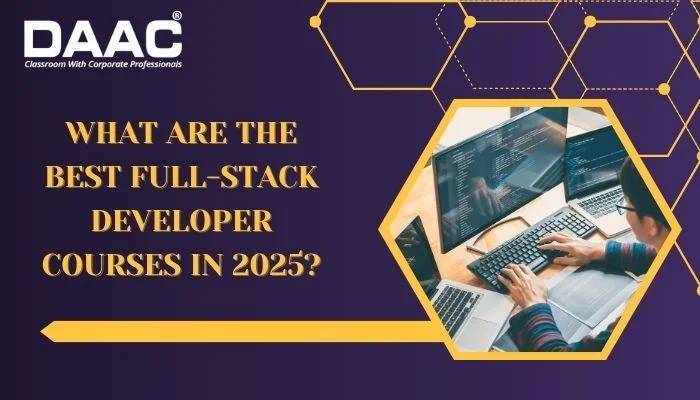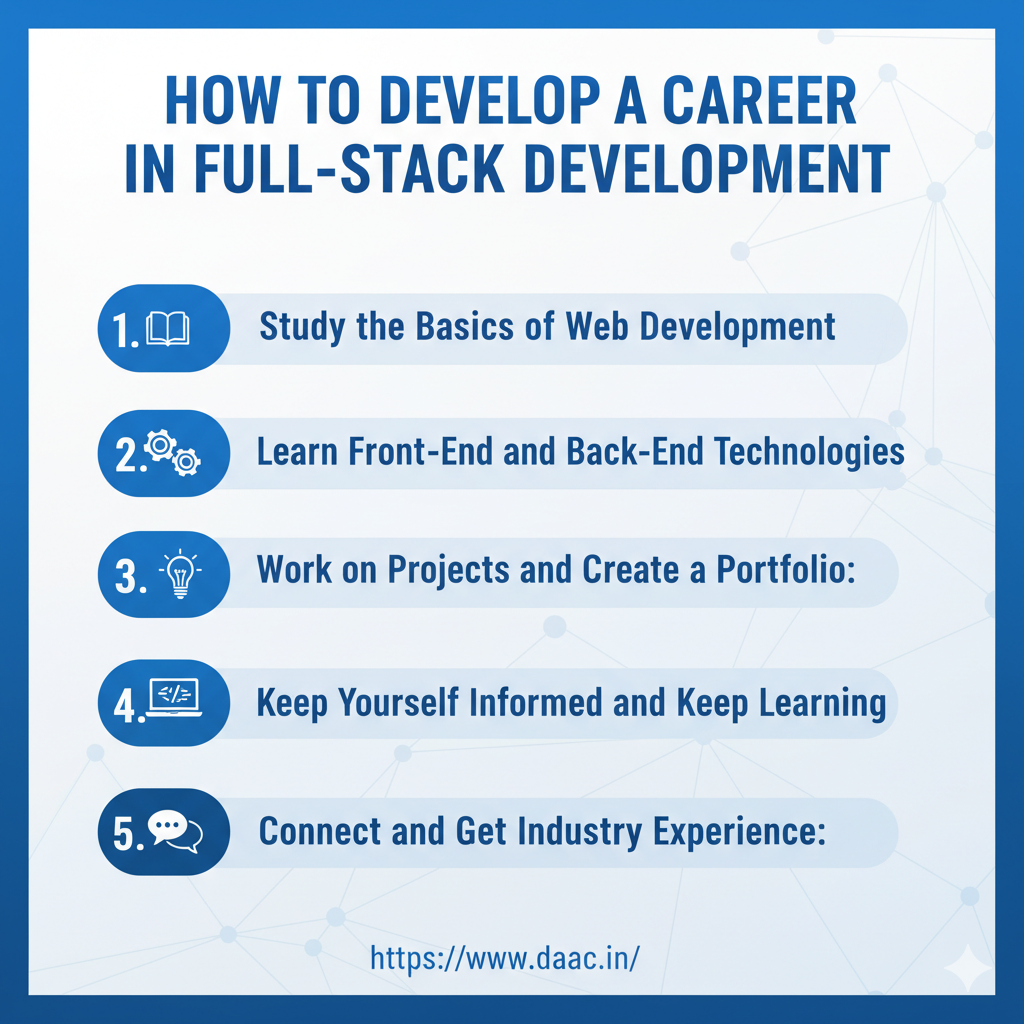What are The Best full-stack developer courses in 2025
Digital Marketing November 14, 2025

Introduction of Full-Stack Developer
Full-stack developer courses in 2025 : A full-stack developer is a self-sufficient programmer that is competent in both the front-end and back-end aspects of development. A full-stack developer can take a user through a whole web or mobile application development process, and they’ll implement front-end technologies like HTML, CSS, and JavaScript to make interactive user interfaces and use back-end languages like Node.js, Python, or Java to set up databases, servers, and application logic. Knowing how the different parts of the system work and how each part fits with the other into the whole, full-stack developers are very agile and flexible. The technical role of a full-stack developer involves the entire end-to-end development process, which is a highly valued skill in the current fast-paced technology world. Full-stack development involves the entire end-to-end development process, which is a highly valued skill in the current fast-paced technology world.Key Takeaways
- Firstly, a full-stack development knowledge will require a front-end (client-side) and a back-end (server-side) technology to be covered under the syllabus, such as HTML, CSS, JavaScript, React, and Node.js, so that a person can build full-stack applications.
- A program that offers you the chance of working on real-world projects that you can then showcase in your professional portfolio is the best choice that you can make.
- Before you sign up with any institution, you must be comfortable that you will learn the present and future technologies, including that of 2025.
- If you are a beginner, then a mentorship-based program will be the right learning style for you, and if you have enough of a foundation, you can go for a self-study course.
- Pick out a course that fits your future career plans so that you can either use the course for technology.
Market Analysis of Global Best Full Stack Developer Course in 2025
- It is crucial that one chooses a learning program which provides comprehensive coverage of both front-end and back-end technologies such as HTML, CSS, JavaScript, React, and Node.js so that they acquire a complete skill set.
- It is very important to choose a program with real-world projects so that you can get the much needed hands-on experience while building your portfolio.
- To be a technology-focused course, the program should educate on the present state of technology and various concepts in order to be relevant in 2025.
- Decide on the best learning method for you - like mentorship-based learning if you are a novice, or, a more flexible program to suit more advanced learners.
- Get rid of another program and choose a program that is the best fit for you in terms of career goals and that will help you achieve success in the long run in your tech career.

How to develop a career in full-stack development
- Study the Basics of Web Development: You should start learning the three basic web technologies, which are HTML, CSS, and JavaScript. These are the core tech of any web application and will give you a solid foundation for your future advanced front-end & back-end development.
- Learn Front-End and Back-End Technologies: Familiarize yourself with front-end frameworks such as React, Angular, or Vue.js and also back-end technology like Node.js, Python (Django), or Java (Spring Boot). Knowing both ends and how they work together will allow you to develop complete and functional applications.
- Work on Projects and Create a Portfolio: Practice your abilities through real projects (websites, apps, and APIs) that will serve as proof of your skills. A professional portfolio of work is one of the major ways to attract employers or clients if you prefer freelance work.
- Keep Yourself Informed and Keep Learning: Tech is evolving very fast, thus continuous learning is a must. Be familiar with the new programming languages, frameworks, and best practices by taking online courses and webinars and joining coding communities.
- Connect and Get Industry Experience: Participate in programmer communities, go to hackathon events, and make contacts with professionals on LinkedIn or GitHub. Look for internships, freelance opportunities, or collaborations to get practical


